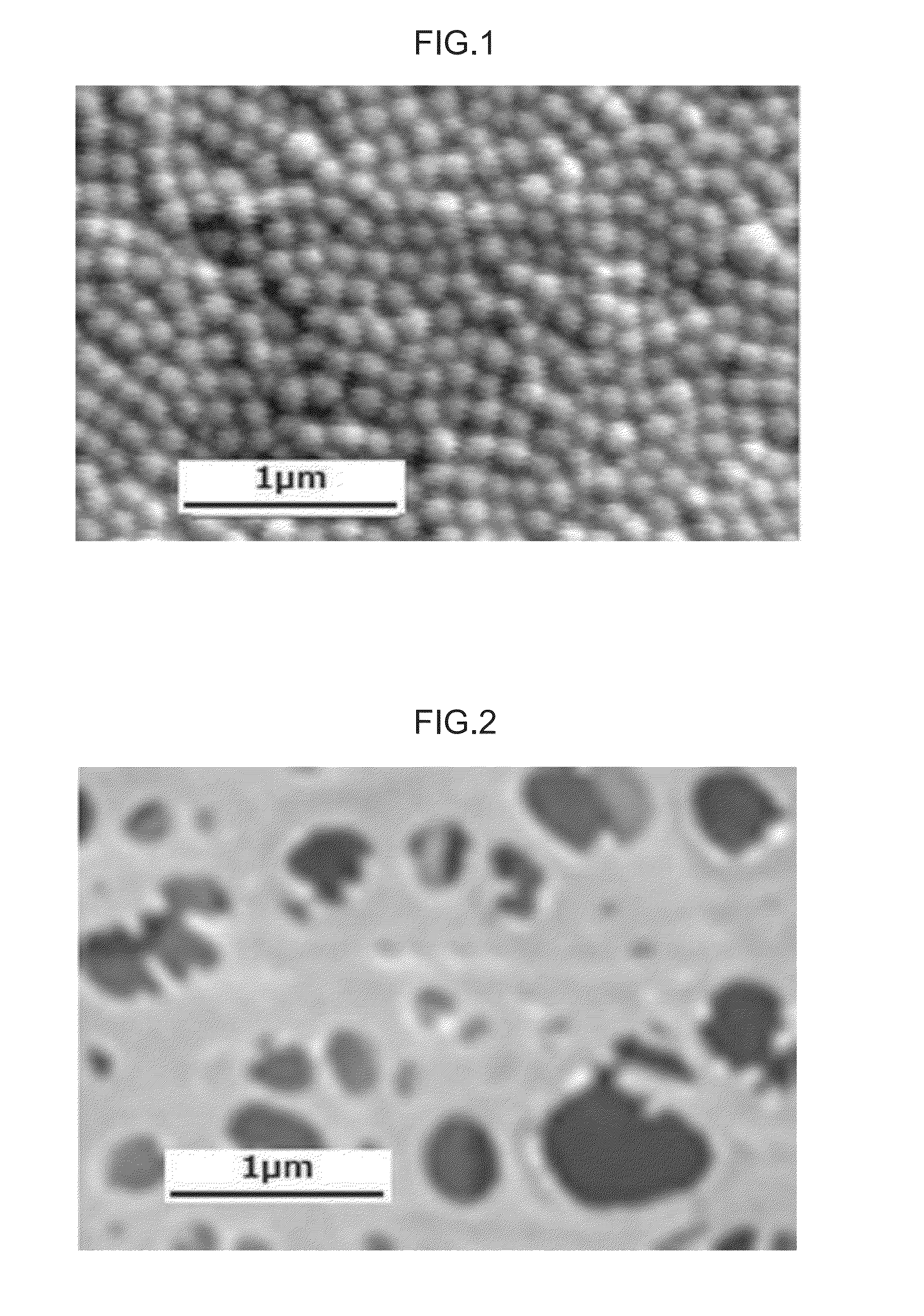Separator for non-aqueous secondary battery, method for producing the same, and non-aqueous secondary battery
a secondary battery and separation device technology, applied in the manufacture of final products, cell components, cell component details, etc., to achieve the effects of high energy density, favorable ion permeability and handling properties, and excellent adhesion to electrodes
- Summary
- Abstract
- Description
- Claims
- Application Information
AI Technical Summary
Benefits of technology
Problems solved by technology
Method used
Image
Examples
example 1
Production of Separator for Non-Aqueous Secondary Battery
[0173]VINYCOAT PVDF AQ360 (manufactured by HIGASHI NIPPON TORYO CO., LTD.) was used as a water-based emulsion (water-based dispersion) including particles formed of a polyvinylidene fluoride resin. This emulsion was diluted, to prepare a coating liquid having a particle concentration of 3.7% by mass. Here, the average particle diameter of the particles formed of a polyvinylidene fluoride resin is 250 nm (0.25 μm), and the resin is a vinylidene fluoride / acrylic acid copolymer (vinylidene fluoride: 70 mol %). Equal amounts of this coating liquid were coated respectively on both sides of a polyethylene microporous membrane (film thickness: 9 μm, Gurley value: 160 sec / 100 cc, porosity: 43%), using a #6 bar coater, followed by drying at 60° C., to form an adhesive layer having a particle content shown in Table 1 below.
[0174]The adhesive layer thus formed was observed by a scanning electron microscope (SEM). As a result, as shown in...
example 2
[0185]A separator for a non-aqueous secondary battery according to the invention was produced and, further, a non-aqueous secondary battery was produced, in the same manner as in Example 1, except that, in Example 1, the coating liquid was diluted such that the concentration of the particles in the coating liquid was changed from 3.7% by mass to 7.4% by mass, thereby forming adhesive layers each having a particle content shown in Table 1 below.
example 3
[0186]A separator for a non-aqueous secondary battery according to the invention was produced and, further, a non-aqueous secondary battery was produced, in the same manner as in Example 1, except that, in Example 1, the coating liquid was diluted such that the concentration of the particles in the coating liquid was changed from 3.7% by mass to 10% by mass, thereby forming adhesive layers each having a particle content shown in Table 1 below.
PUM
| Property | Measurement | Unit |
|---|---|---|
| particle diameter | aaaaa | aaaaa |
| melting point | aaaaa | aaaaa |
| thickness | aaaaa | aaaaa |
Abstract
Description
Claims
Application Information
 Login to View More
Login to View More - Generate Ideas
- Intellectual Property
- Life Sciences
- Materials
- Tech Scout
- Unparalleled Data Quality
- Higher Quality Content
- 60% Fewer Hallucinations
Browse by: Latest US Patents, China's latest patents, Technical Efficacy Thesaurus, Application Domain, Technology Topic, Popular Technical Reports.
© 2025 PatSnap. All rights reserved.Legal|Privacy policy|Modern Slavery Act Transparency Statement|Sitemap|About US| Contact US: help@patsnap.com

